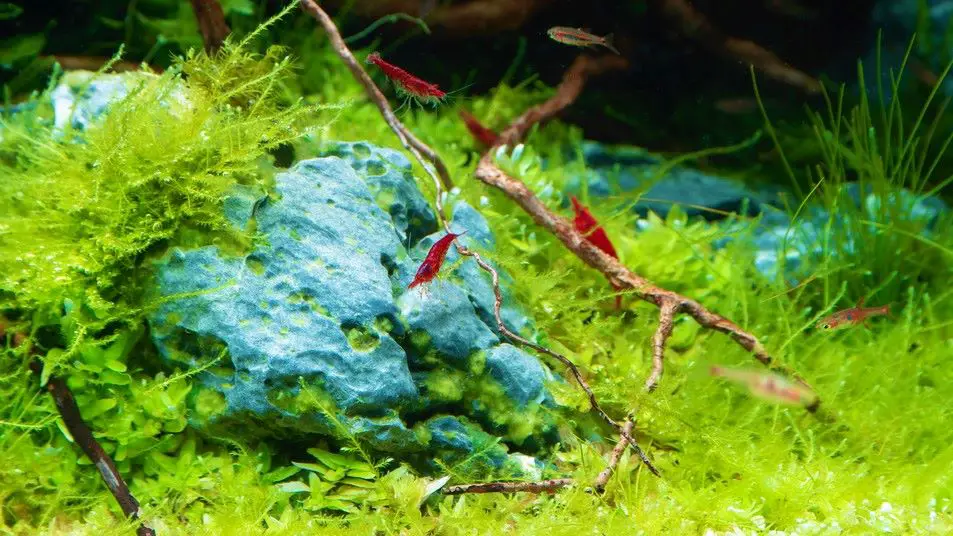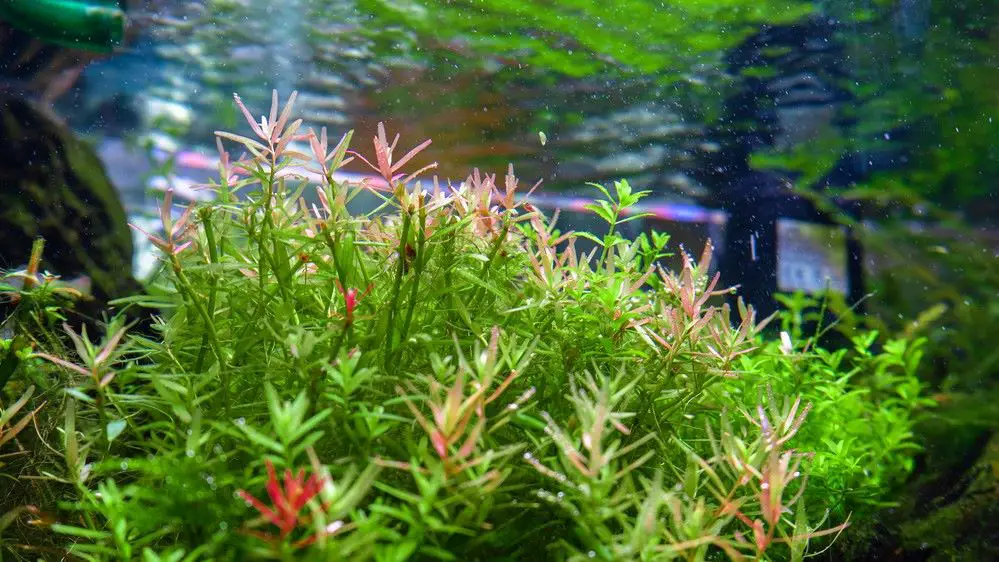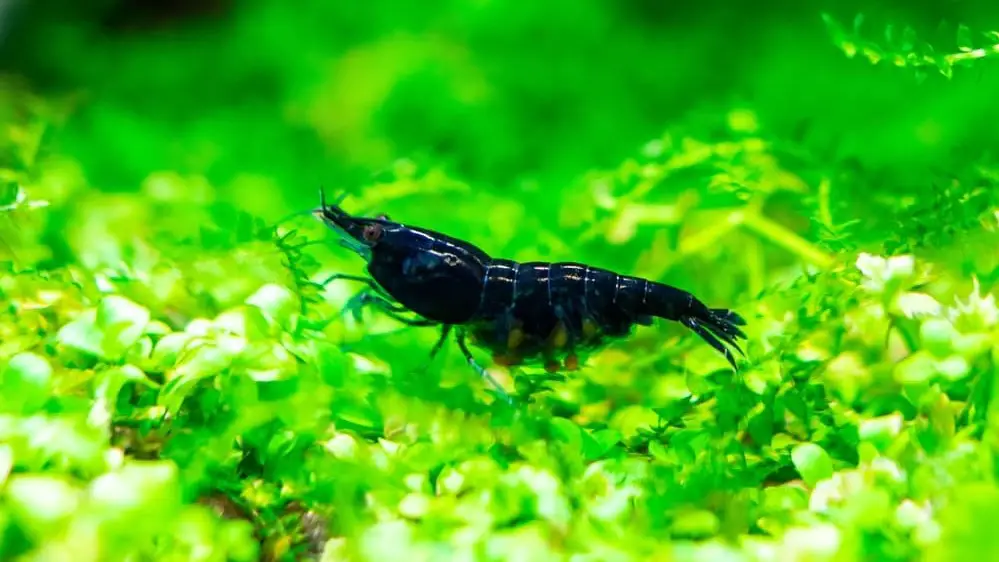When it comes to maintaining a thriving shrimp tank, one question often arises: Can you use CO2? This question stems from the desire to promote lush plant growth using CO2, while ensuring the health and well-being of the shrimp.
For instance, consider the dilemma of a shrimp keeper who introduced CO2 into their tank to enhance plant growth, only to find their normally active and vibrant shrimp becoming lethargic and unresponsive. This scenario raises the question, what is the relationship between CO2 and shrimp, and how can it be managed effectively?
Yes, CO2 can be used in a shrimp tank, but it must be done very carefully. Shrimp are sensitive to environmental changes, and a sudden increase in CO2 levels can be harmful. If you decide to use CO2, it’s crucial to introduce it slowly and monitor your shrimp closely for any signs of distress. Some shrimp keepers have successfully used CO2 in their tanks without any negative effects on their shrimp. However, others have experienced losses, indicating that the use of CO2 in a shrimp tank can be a delicate balancing act.
As a seasoned shrimp keeper, I’ve had my fair share of challenges and triumphs. One of the most significant hurdles I faced was figuring out the delicate balance between maintaining a lush, planted tank and ensuring the health and well-being of my shrimp. This balance became particularly tricky when I decided to introduce CO2 into my shrimp tank.
I remember it was about 10 years ago when I first considered using CO2. I had a thriving community of cherry red shrimp, and my plants were doing well, but I wanted to take my planted tank to the next level. I’d read about the benefits of CO2 for plant growth and decided to give it a try.
I started off slow, gradually introducing CO2 into the tank over a period of two weeks. Despite my caution, I noticed my shrimp were not as active as they usually were. I was puzzled and concerned. I had followed all the advice I’d found, but my shrimp were clearly not thriving in their new environment.
After some research and consultation with fellow shrimp keepers, I realized that while CO2 is beneficial for plants, it can be harmful to shrimp if not carefully managed. Shrimp are sensitive creatures, and even slight changes in their environment can have significant impacts on their health.
I took immediate action, reducing the CO2 levels and closely monitoring my shrimp. Over time, they regained their vitality, and I learned a valuable lesson about the delicate balance required in a shrimp tank. Since then, I’ve been able to successfully maintain a CO2-enhanced, planted tank that also supports a healthy shrimp community. But this experience served as a stark reminder that in shrimp keeping, as in all things, balance is key.
What is the Impact of CO2 on Shrimp Health?
CO2, or carbon dioxide, plays a crucial role in the health and well-being of shrimp. While it’s a necessary component of a well-balanced aquarium ecosystem, particularly in planted tanks where it aids in plant growth, too much CO2 can have detrimental effects on shrimp.
Shrimp are sensitive creatures and respond to changes in their environment, including fluctuations in CO2 levels. High levels of CO2 can lead to a drop in the pH of the water, making it more acidic. Shrimp prefer slightly alkaline conditions, and a sudden shift towards acidity can cause stress, leading to health issues and, in severe cases, death.
Excessive CO2 can also lead to a lack of oxygen in the water. Shrimp, like all aquatic creatures, need oxygen to survive. When CO2 levels rise, the amount of available oxygen decreases, which can lead to suffocation.
Moreover, high CO2 levels can affect the molting process in shrimp. Molting is a critical part of a shrimp’s life cycle, allowing it to grow and develop. However, changes in water chemistry, such as increased CO2, can disrupt this process, leading to failed molts and potentially fatal consequences.
While CO2 is an essential part of a planted aquarium, it’s crucial to monitor and manage its levels to ensure the health and well-being of your shrimp.

How to Safely Introduce CO2 into a Shrimp Tank?
Introducing CO2 into a shrimp tank can be a delicate process. Here are some steps to ensure it’s done safely and effectively:
- Start Slowly: Begin with a low CO2 level and gradually increase it over time. This gives your shrimp time to adjust to the new conditions. A sudden increase in CO2 can cause stress and potentially harm your shrimp.
- Monitor pH Levels: CO2 can lower the pH of your tank, making the water more acidic. Shrimp prefer slightly alkaline conditions, so it’s important to regularly check the pH levels. If you notice a significant drop, you may need to adjust your CO2 levels.
- Ensure Adequate Oxygenation: High levels of CO2 can deplete the oxygen in your tank. Make sure your tank is well oxygenated, either through an air stone, a sponge filter
 , or surface agitation.
, or surface agitation. - Use a CO2 Indicator: A CO2 drop checker is a useful tool that can help you monitor the CO2 levels in your tank. It changes color to indicate the amount of CO2 in the water, helping you ensure it’s within a safe range for your shrimp.
- Turn Off CO2 at Night: Plants absorb CO2 during the day but release it at night. To prevent CO2 build-up when your plants aren’t using it, consider turning off your CO2 system during the night.
- Observe Your Shrimp: Your shrimp can give you valuable clues about the CO2 levels in your tank. If they’re active and feeding, it’s a good sign that they’re comfortable. If they’re lethargic, hiding, or not eating, it could indicate that the CO2 levels are too high.
Every tank is unique, and what works for one might not work for another. It’s important to monitor your tank closely and adjust your CO2 levels as needed to ensure the health and well-being of your shrimp.

What are the Signs of CO2 Overdose in Shrimp?
CO2 overdose, also known as CO2 poisoning, can be a serious issue in a shrimp tank. Shrimp are sensitive to changes in their environment, and an excess of CO2 can lead to a variety of symptoms. Here are some signs to look out for:
- Lethargy: One of the first signs of CO2 overdose is a noticeable decrease in activity. Shrimp may become lethargic, moving less than usual or not at all.
- Loss of Appetite: Shrimp affected by high CO2 levels may stop eating. If you notice your shrimp ignoring their food, it could be a sign of CO2 overdose.
- Difficulty Molting: High levels of CO2 can disrupt the molting process. If you notice your shrimp struggling to molt, or if they fail to molt entirely, it could be due to an excess of CO2.
- Gasping at the Surface: In severe cases, shrimp may be seen at the water’s surface, appearing to gasp for air. This is a sign that the oxygen levels in the water are dangerously low due to high CO2 levels.
- Death: In extreme cases, a CO2 overdose can be fatal. If you find dead shrimp in your tank and can rule out other common causes of death, it’s possible that high CO2 levels are to blame.
If you notice any of these signs, taking immediate action is important. Reduce the CO2 levels in your tank, increase aeration to boost oxygen levels, and closely monitor your shrimp to ensure they recover.

Can Certain Shrimp Species Tolerate Higher CO2 Levels?
Shrimp species vary in their tolerance to CO2 levels, much like they do with other water parameters. However, it’s important to note that all shrimp require a stable environment, and sudden changes in CO2 levels can be harmful to any species.
- Neocaridina Shrimp: Neocaridina shrimp, such as the popular Red Cherry Shrimp, are known for their hardiness and adaptability. They can tolerate a wider range of water parameters compared to other shrimp species, including CO2 levels. However, this doesn’t mean they can handle extreme levels of CO2. It’s still crucial to introduce CO2 gradually and maintain a balanced environment.
- Caridina Shrimp: Caridina shrimp, which include Crystal Red Shrimp and Taiwan Bee Shrimp, are generally more sensitive to changes in their environment, including CO2 levels. They require more stable conditions and may not tolerate high CO2 levels as well as Neocaridina shrimp.
- Amano Shrimp: Amano shrimp are known for their hardiness and can tolerate a range of water parameters. However, like other shrimp species, they can be sensitive to sudden changes in CO2 levels.
- Ghost Shrimp: Ghost shrimp are quite hardy and can tolerate a range of water conditions, including higher CO2 levels. However, as with all shrimp, it’s important to introduce changes gradually and monitor the shrimp’s behavior closely.
While some species may tolerate higher CO2 levels, it’s always best to err on the side of caution. Shrimp are sensitive creatures, and maintaining a stable, balanced environment is key to their health and well-being.
What are the Alternatives to CO2 in a Planted Shrimp Tank?
While CO2 can significantly boost plant growth in an aquarium, it’s not the only way to achieve a lush, green tank. Here are some alternatives to using CO2 in a planted shrimp tank:
- Low Light Plants: Opt for plants that don’t require high levels of CO2. Many low light plants, such as Java Fern, Anubias, and various mosses, can thrive without additional CO2.
- Root Tabs: These are small tablets that you push into your substrate near the roots of your plants. They slowly release nutrients, including carbon, directly to the plant roots, promoting growth.
- Aquarium Soil: Certain types of aquarium soil can help provide the necessary nutrients for plant growth. These soils slowly release nutrients over time, reducing the need for additional CO2.
- Algae: While often seen as a nuisance, certain types of algae can provide a natural source of CO2 for your plants. Just be sure to keep it under control to prevent it from overtaking your tank.
- Regular Water Changes: Regular water changes can help replenish the carbon naturally present in tap water
 , providing a small but steady supply of CO2 to your plants.
, providing a small but steady supply of CO2 to your plants.
The key to a successful planted shrimp tank is balance. Whether you choose to use CO2 or an alternative, monitoring your tank closely and adjusting as necessary to maintain a healthy environment for both your shrimp and your plants is important.
In Closing: Striking the Balance for Happy Shrimp Keeping
Ultimately, the key to successful shrimp keeping, especially when dealing with CO2, lies in maintaining a delicate balance. While CO2 can enhance plant growth and create a vibrant, lush environment, it’s crucial to introduce it carefully and monitor its levels to ensure the health and well-being of your shrimp. Remember, each tank is unique, and what works for one might not work for another.
Finally, don’t hesitate to reach out if you need any help or have any questions. If you can’t reach me here, check out the aquarium shrimp keeping groups on Facebook. There’s a whole community of shrimp keepers out there who are more than willing to share their experiences and advice.
Happy Shrimp Keeping!
FAQ
Q. Can you use CO2 with shrimp?
A. Yes, you can use CO2 with shrimp, but it must be done carefully. Shrimp are sensitive to changes in their environment, and a sudden increase in CO2 levels can be harmful. If you decide to use CO2, it’s crucial to introduce it slowly and monitor your shrimp closely for any signs of distress.
Q. Does a shrimp tank need CO2?
A. A shrimp tank does not necessarily need CO2. While CO2 can enhance plant growth in a planted tank, it’s not essential for shrimp health. In fact, too much CO2 can be harmful to shrimp. It’s possible to maintain a healthy shrimp tank without the use of CO2, especially if you choose plants that don’t require high levels of CO2.
Q. Can you put too much CO2 in an aquarium?
A. Yes, it is possible to put too much CO2 in an aquarium. High levels of CO2 can lower the pH of the water, making it more acidic, which can be harmful to shrimp. Additionally, excessive CO2 can deplete the oxygen in the water, which can lead to suffocation.
Q. What fish are sensitive to CO2?
A. Many fish species are sensitive to CO2, just like shrimp. This includes species that prefer stable water conditions, such as Discus and certain types of Tetras. High levels of CO2 can cause stress and health issues in these fish.
Q. Can CO2 cause algae growth in a shrimp tank?
A. While CO2 itself does not directly cause algae growth, an imbalance between CO2, light, and nutrients can lead to an increase in algae. If there is too much light or nutrients relative to the amount of CO2, it can create conditions that are favorable for algae growth.
